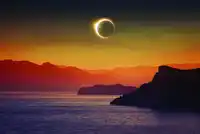
Jewels of the Arctic - Greenland Eclipse
Explore a world of almost endless daylight on an expedition cruise timed specifically for you to witness an unforgettable solar eclipse in the arctic.

Small Ship Safari
Our small expedition ship gives us the flexibility to explore anywhere in the region. We have no set itinerary and a vast area to explore. This is not a typical tourist destination and we are unlikely to encounter other ships as we explore.

Your Expedition Team
With a range of backgrounds, all of our expedition leaders have years of experience working aboard ships in the polar regions. Whether they focus on photography, wildlife, history, culture or a mixture of all these things, they are fascinating people who will greatly add to your Arctic experience.

Onboard Lectures
Your expedition leaders will host informative lectures on various local topics. These informal lectures will range from the history of the region, to the effects of climate change on the habitats of Arctic wildlife, offering you a greater understanding of the areas you will visit throughout your trip.